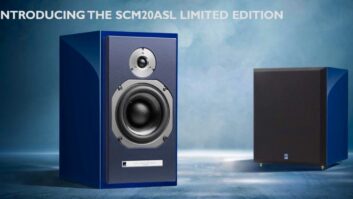WASHINGTON, D.C. —The Federal Trade Commission (FTC) wants to bring its standards for measuring home-audio amplifier output into the multichannel era. But the Consumer Electronics Association (CEA) wants the FTC to hold off so its members can devise a consensus standard for the commission’s consideration.
The FTC hasn’t set a timetable for finalizing a rule following a March 30 deadline for receiving comments.
Only CEA filed comments, in which it said its home audio members were divided on what standard to apply (see table) and recommended that the FTC postpone a decision until a CEA standards-setting committee can recommend a standard.
In March, CEA’s R-4 committee formed a working group to establish an industry consensus, but CEA said the completion of standards isn’t expected until late this year even though it is seeking to “fast-track” the work.
The FTC’s mandatory measurement standards date back to May 1974, when virtually all amplifiers and receivers available to consumers delivered no more than two channels, the commission said in a rulemaking notice. Manufacturers and retailers are required to use the FTC standard to measure and report power output in literature and advertising.
Under the current FTC standard, all “associated channels” of an amplifier must be driven to full rated power simultaneously during power-measurement tests. Because it was written for the two-channel era, however, the standard is silent on whether all channels of a multichannel amp, or only some channels, should be designated as associated.
As a result, manufacturers who don’t drive all channels simultaneously when testing a multichannel component amp, receiver or shelf system don’t violate the current FTC rule, said FTC economist Dennis Murphy, who enforces the amplifier rule.
A multichannel standard would bring order to an industry whose suppliers rate multichannel output in different ways.
Many multichannel power amplifiers are measured with all channels driven simultaneously, but that happens less often with receivers, CEA noted in its comments. Among mainstream receiver manufacturers, several suppliers said, most drive the front left-right channels simultaneously during measurement tests, the two surround channels simultaneously but separately from the front left-right channels, and the center channel by itself. Nonetheless, companies such as Kenwood have begun to promote receivers whose output is rated for full power with all channels driven simultaneously.
Proponents of the latter method claim that although movie soundtracks are unlikely to place equal peak demands on all channels simultaneously, the more stringent rating gives consumers the confidence that the amp will deliver as advertised if such an event occurs.
Multichannel DVD-Audio and SACD promises to be more demanding, depending on the material. “You’ll increasingly see more equal power demand on all channels simultaneously with DVD-Audio and SACD,” said Adcom marketing director Len Safhay.
In its comments CEA said “it would be rare for an amplifier to be required to supply full rated power to all channels simultaneously” when reproducing movie soundtracks.
As for DVD-Audio and SACD, the association would say only that “more often than movie soundtracks, musical recordings place momentary demands on several channels, especially during loud passages.”
For manufacturers who don’t currently rate all channels simultaneously, the danger is that they will be forced to revise down advertised power ratings, creating the appearance to consumers that they’re getting less for their money, said one audio manufacturer. A six-channel receiver rated at 105 watts per channel at 1kHz into an 8-ohm load when measured under a 2-1-2 standard would be re-rated at about 85 watts per channel when all channels are driven simultaneously, the supplier said.
Mid- and low-end receiver makers will be even less interested than higher-end suppliers in adopting the more stringent standard, he added, because they want to make their products look as powerful as possible at moderate price points.
Nonetheless, a single standard would help consumers make more educated buying decisions, the supplier said, even if the FTC doesn’t specify that the measurements be full-bandwidth measurements.
Under the current standard, the FTC simply requires manufacturers’ literature, but not manufacturer or retailer ads, to disclose the bandwidth used in making the measurements, as well as the resulting THD, said Murphy of the FTC. For receivers and component amps, he noted, the measurements must be taken at 8 ohms, although measurements at other loads can also be included in literature.
In its proposed rulemaking, the FTC offered up three options for consideration. The most stringent would require all channels but a dedicated subwoofer channel be driven simultaneously to full rated output during testing.
The second would require the three front channels be driven simultaneously, with the two surrounds driven simultaneously at full rated output in a separate test. The third option would allow for a 2-1-2 test.
In other comments, CEA pointed to the introduction of six-and seven-channel surround formats in suggesting that the FTC rule be flexible enough so that amplifiers with more than five channels aren’t disadvantaged relative to amps with only five channels.
How Amps Should Be Tested/(% CEA Audio Members Who Agree)
Source: March survey by CEA, Arlington Heights, Va.
© TWICE 2001













